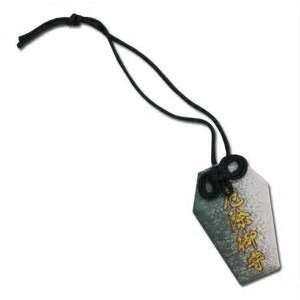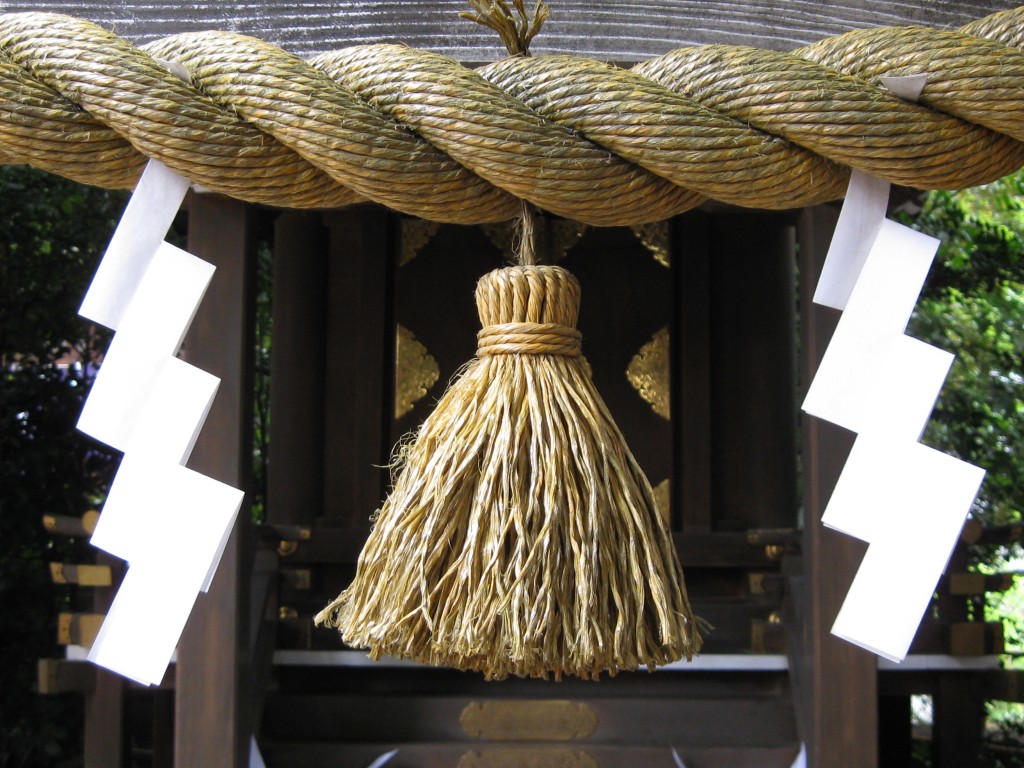
Omamori (protective amulet)
One thing you’ll often find at shrines are amulets and services to protect against ‘yakudoshi‘, years when one is susceptible to misfortune. I used to think it was pure superstition, but when I got to the age of 42, a yakudoshi tme for men, strange things started happening to my body. It made me suppose that it was a pivotal time in the aging process, and that like many ancient practices there was probably more than a grain of truth to it. A Daily Yomiuri article suggests that others have been thinking along similar lines.
***************************************************************
Yakudoshi key to happiness
Yoshiko Kosaka / Yomiuri Shimbun Staff Writer Dec. 7, 2012
Yakudoshi is a Japanese folk custom that warns that a person is more likely to experience misfortune or illness at specific ages. To avoid bad things from happening, it is believed one should live modestly during those years.
Yakudoshi is nothing new–it’s a belief that has been passed down for ages. But recently, more people are starting to reconsider their lifestyle by taking better care of their health and making friends of a similar age in their communities.
Generally, men are believed to go through two periods of yakudoshi at ages 25 and 42, while women experience yakudoshi at 19 and 33. Under the yakudoshi concept, a person is 1 year old at birth since the period between conception and birth is considered the first year of life. Year 2 begins at the start of following year.

Protective bracelet against yakudoshi
There are various stories why yakudoshi is set at those ages. Some say it comes from the 12-year cycle of the Chinese “eto” astrological calendar, while other say it’s a play on words. For example, in Japanese, “19” is read as “juku,” which can also be written using kanji meaning “multiple suffering,” while “33” can be read as “san-zan,” meaning “hideous.”
Yakudoshi ages are also calculated differently depending on the shrine or temple.
The Fukuoka-based private research institute Anti-Aging Laboratory, which was established by a health food company, conducted a survey in August on 2,000 people aged between 30 and 69.
According to the survey, 32 percent of respondents “care about yakudoshi,” and 36 percent said they had gone to temple or shrine to receive “yakuyoke” or “yakubarai” blessings to ward off misfortune.
More than 40 percent said they believed they were more likely to become sick during yakudoshi years.
The Anti-Aging Laboratory then studied the relationship between aging and illness to propose a set of “new yakudoshi” to promote health awareness.
With support from the Tokyo-based Japan Medical Data Center, the lab analyzed the medical bills of about 1 million people to measure the frequency of seven health conditions, such as cerebrovascular disease, dementia and cancer, at particular ages.
According to the results, illnesses were more likely to occur in men at the ages of 24, 37, 50 and 63, and at 25, 39, 52, and 63 in women. These ages were then set as the new yakudoshi.
“We hope the new yakudoshi will become a good opportunity for people to review their lifestyles so they can live longer lives,” said Anti-Aging director and arteriosclerosis expert Hiroshige Itakura.

Protective amulet
===
Popular among youth
Young people in particular also seem to be interested in yakudoshi.
Iwashimizu Hachimangu in Yawata, Kyoto Prefecture, a shrine known for specializing in yakuyoke, has seen an increase in the number of young people visiting for that purpose.
“They seem to think of this shrine as a ‘power spot.’ I’m often asked to explain about yakuyoke,” said Norito Sakurai, a spokesperson for the shrine.
Meanwhile, many women in their 30s have taken to visiting Nishiarai Daishi in Adachi Ward, Tokyo. According to the temple, 37 is also an unlucky age for women and as a result, many women who have turned or will turn 37 visit there.
Young people in their 20s and 30s are also often spotted at Sano Yakuyoke Daishi in Sano, Tochigi Prefecture.
“Yakudoshi has another meaning of ‘yaku o morau‘ [getting a role]. It’s considered to have a positive vibe as a turning point in a person’s life,” said essayist Hiromi Tanaka, an author of a book on yakudoshi.
“The number of women who visit shrines or temples for fun has increased over the last couple of years, and I think they are showing some interest in experiencing this old custom in the same way foreigners are interested in seeing Japan,” she added.

Yakubarai – purifying against yakudoshi
A reason to get together
Some groups use yakudoshi as a way to get people to interact with others in their community.
Three years ago, Heartwell 21, a nonprofit organization in Kitakyushu, began inviting yakudoshi age employees from local companies to attend yakubarai rituals together as part of exchange events.
“Participants of the same generation wine and dine together [after the ritual] and get to know each other while learning about a traditional Japanese custom,” said an NPO staff member.
At Goyu Shrine in Toyokawa, Aichi Prefecture, men get together to form a “Yakudoshi-kai” group for organizing a summer festival.
The main purpose of the festival is yakubarai, but Yasuyuki Fukui, 40, one of the group’s members, said, “The festival will help strengthen the sense of unity among those of the same generation, while preserving our region’s traditions.”
Kokugakuin University Prof. Takanori Shintani, a folklore expert, said: “Japanese have long felt secure by casually practicing yakubarai. In times when people feel the future seems uncertain, they seek security and review their lives–yakudoshi could be an indicator of that.”
****************************************************************************
NB The Kokugakuin encyclopedia offers this interesting snippet about the origins of yakudoshi…..
” Originally, yakudoshi is said to have signified auspicious ages that called for a ceremonial “celebration of longevity” (toshi iwai), similar to kanreki at 60 years of age and koki at 70 years of age. A person reaching a yakudoshi age was thus required to undergo purification by abstinence and confinement and to engage in sacred Shinto activities—such as carrying a portable shrine (mikoshi) or joining a shrine guild. Consequently, the term is also used in the sense of yakudoshi (役年), an age at which one must assume “duties” (yaku 役). At present, the word possesses little of its former meaning of an auspicious age, strongly retaining only the sense of taboo that calls for restraint in starting new construction, new projects, and so on.”
— Yumiyama Tatsuya


I think in the case of women, it’s pretty easy to recognize that 19 and 33 are the ages at which a woman would have had her first and last child and 37 perhaps when she’d begin menopause. For men it isn’t so clear, but as you mentioned, definitive physical changes do occur at those ages.
One spring a few years ago, I did some damage to my right knee and right elbow. My acupuncturist was puzzled by their persistence, and one afternoon he asked my age. When I said 42, he said, “Ah that explains it. It’s your yakudoshi!”
And when I just happened to be the same age when I did the Shikoku 88 walk, everyone told me that doing it during your yakudoshi is particularly auspicious.
Thanks, Ted, for that…
Interesting story about your acupuncturist. And interesting too that I also got back problems at age 42 and was told there was a structural realignment going on…
I guess your ages for women are backdated in time… with the longevity of recent times, I’ve noticed that shrines have added upper ages as well and that a yakudoshi for men supposedly occurs in the early sixties too… Watch out!